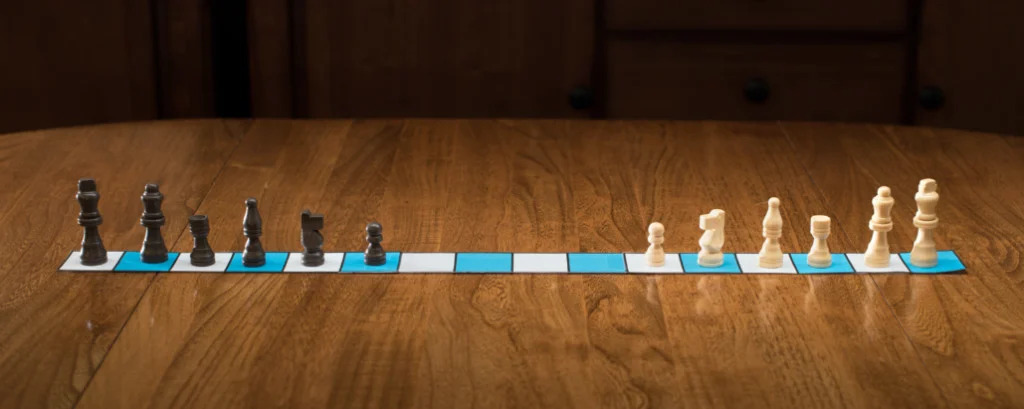Chess960 is a chess variant created by Bobby Fischer in which the starting position of the pieces on the home ranks are randomized (with a number of restrictions):
Before the game, a starting position is randomly determined and set up, subject to certain requirements. White’s pieces (not pawns) are placed randomly on the first rank, with two restrictions:
The bishops must be placed on opposite-color squares.
The king must be placed on a square between the rooks.
Black’s pieces are placed equal-and-opposite to White’s pieces. (For example, if the white king is randomly determined to start on f1, then the black king is placed on f8.) Pawns are placed on the players’ second ranks as in standard chess.
After setup, the game is played the same as standard chess in all respects, with the exception of castling from the different possible starting positions for king and rooks.
This yields a potential 960 different starting positions.
Fischer’s motivation in creating the variant (and its popularity since) was to, as Frederic Friedel summarized it in Chess News, “eliminate the staggering amount of preparation that is required in regular chess.”
Fischer’s intention in introducing the new rules was to eliminate the incredible level of openings preparation that prevails in contemporary chess. In my conversations with him, I admitted that this was a real problem: imagine a world championship in a few years from now, where the two players reel off 28 moves of a known variation, in just a few minutes — and then one of them plays a novelty. His opponent thinks for an hour and resigns the game! Bobby enjoyed this somewhat facetious scenario that justified his introduction of New Chess, where players must devise original moves from the start. Memorizing thousands of home prepared opening lines would be eliminated, and the playing field would be levelled.
Friedel notes a number of issues with Chess960, however, the biggest of which is that some of the randomized positions give a substantial advantage to one side. This can be remediated somewhat by having players play two games, swapping the white and black starting positions, but this requires more time and has other issues (as Friedel notes, “in the second game players have learned from the first one” so the second game isn’t necessarily a great equalizer).

